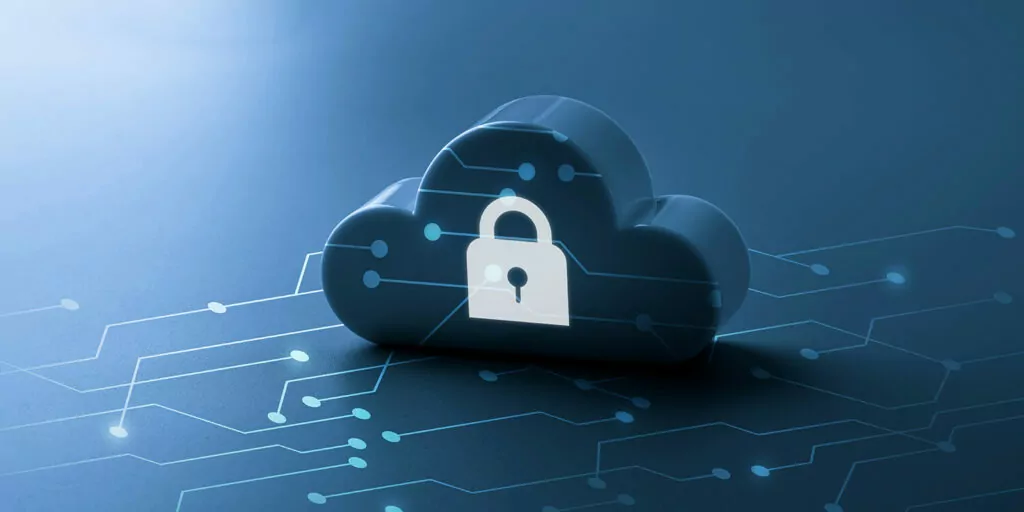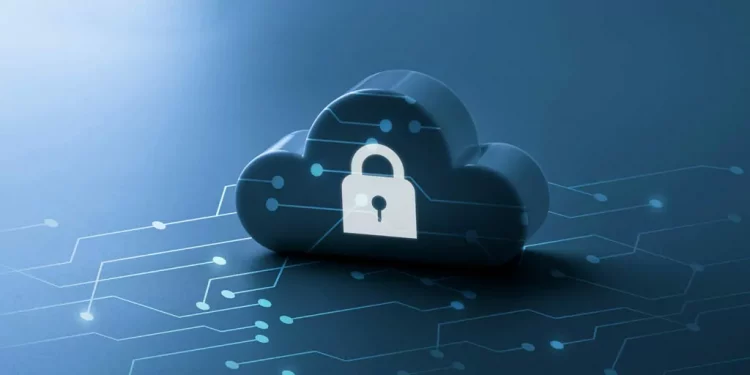Introduction
In this blog, we will cover the most frequently asked question ‘What is cloud security, and what are the common cloud vulnerabilities associated with it are.
Did you know that cloud computing is a billion industry? Not only is it a billion-dollar industry, but it continues to grow every day! Individual use of cloud services is becoming more common as consumers become more tech-savvy. Cloud migration is accelerating because it introduces low-cost, flexible services into a previously expensive technological sphere. Moreover, cloud computing introduces new security challenges.
We know you have several questions in your mind about the various terms we have used in the above paragraph. You must have an understanding of how to protect cloud data. In this blog, we will provide information about cloud security solutions and best practices you can use to control your cyber safety.
 With the onset of advancements in technology, cloud usage has exponentially increased. It was especially accelerated during the pandemic when businesses were transitioning into digital modes. With the increase in adoption, the increase in bad actors focusing their efforts on exploiting common cloud vulnerabilities also grew.
With the onset of advancements in technology, cloud usage has exponentially increased. It was especially accelerated during the pandemic when businesses were transitioning into digital modes. With the increase in adoption, the increase in bad actors focusing their efforts on exploiting common cloud vulnerabilities also grew.
As the cloud continues to grow, so do the associated threats. It is crucial for businesses to play their part in maintaining a secure cloud environment to safeguard themselves and their stakeholders from cyberattacks. Implementing robust cyber security tips will help ensure data protection and overall digital safety.
According to Wikipedia:
“Cloud security or cloud computing security is a broad set of policies, technologies, applications, and controls utilized to protect virtualized IP, data, applications, services, and the associated infrastructure of cloud computing.”
Basically, cloud security is a sub-domain of computer security, network security, and information security. Cloud security refers to the safety guidelines, technology, and best practices that are used to protect sensitive data and applications stored in the cloud as well as to prevent unauthorized access to your cloud.
What is cloud computing?
The term ‘cloud’ or ‘cloud computing refers to the process of accessing resources, software, and databases over the Internet and outside of the constraints of local hardware. It allows organizations to scale their operations more easily by offloading a portion, or the majority, of infrastructure management to third-party hosting providers.
The most common and widely adopted cloud computing services are:
- IaaS (Infrastructure-as-a-Service): A hybrid approach, where organizations can manage some of their data and applications on-premise while relying on cloud providers to manage servers, hardware, networking, virtualization, and storage needs.
- PaaS (Platform-as-a-Service): Gives organizations the ability to streamline their application development and delivery by providing a custom application framework that automatically manages operating systems, software updates, storage, and supporting infrastructure in the cloud.
- SaaS (Software-as-a-Service): Cloud-based software hosted online and typically available on a subscription basis. Third-party providers manage all potential technical issues, such as data, middleware, servers, and storage, minimizing IT resource expenditures and streamlining maintenance and support functions.
Cloud security is critical for the protection and cybersecurity of the cloud data we want and need to access daily. There is much information worth protecting, from sensitive remote work files to priceless home photos and videos.
However, because of the amount of information that can be obtained with the right cyberattack, these cloud storage accounts are also valuable to experienced hackers. With the majority of data breaches targeting cloud-based digital assets, the best protection against these attacks is to prevent them from happening in the first place. Finding out what cloud security is and how it works is a great place to start.
Irrespective of the size of your company or organization, cloud security should be a primary concern. Cloud infrastructure supports nearly every aspect of modern computing across all industries and verticals.
However, successful cloud adoption requires adequate countermeasures to defend against modern-day cyberattacks. Cloud security solutions and best-practice are necessary to ensure business continuity whether your organization operates publicly, privately, or in a hybrid cloud environment.
The Cloud Security Composition
Cloud security enforces security controls in cloud environments in various ways:
- Policies: Since cloud security policy is the bedrock of your cloud security, your cloud security policy should provide clear guidelines that define the cloud ecosystem’s perimeter.
- Procedures: defines the specific processes and tasks involved in safeguarding your cloud environment. This is your cloud security blueprint, and it includes any security measures enforced by third-party vendors as well as your in-house team.
- Technological tools: help protect your cloud computing environment. Generally, traditional security controls, such as firewalls and encryption, may be included in basic cloud security tools, whereas advanced solutions may include automation and Artificial Intelligence (AI) capabilities.
In cloud computing, ownership of these components can vary a lot. This can make evaluating the extent of a client’s security responsibilities difficult. It’s crucial to understand how these are generally categorized because cloud security can look different depending on who is in charge of each component.
To make things easier, cloud computing components are protected from two angles:
Cloud Service Types
Third-party vendors sell cloud service types as modules that can be grouped into a cloud environment. Depending on the type of service, you may handle a varying degree of the components within the service:
- The foundation of any third-party cloud service:
The physical network, data storage, data servers, and computer virtualization frameworks are all the responsibility of the supplier. Before being made available to clients for remote access, the service is hosted on the provider’s servers and virtualized via their internal network.
These are further followed by IaaS, Saas, and PaaS services.
Cloud Environments
They are deployment models that combine one or more cloud services to form a solution for end-users and businesses. In terms of management obligations, including security, clients, and suppliers are separated.
The following cloud environments are currently in use:
- Public Cloud Environments—composed of multi-tenant cloud services allowing a client to share a service provider’s servers with other clients. These are mainly third-party services managed by a provider to offer clients web access.
- Private Third-party Cloud Environments—are based on the usage of a cloud service. It allows them to utilize their cloud exclusively. Typically, an external supplier owns, manages, and operates these single-tenant setups.
- Private In-house Cloud Environments—made up of single-tenant cloud service servers, but each has its own data center. In this case, the company manages the cloud environment, allowing for complete configuration and setup of all elements.
- Environments with Multiple Clouds—includes combining two or more cloud services from different vendors is required. It is possible to use any combination of public and/or private cloud services.
- Environments of Hybrid Cloud—consists of combining one or more public clouds with a mix of private third-party cloud and/or onsite private cloud data centers.
From this vantage point, we can see how cloud-based security differs depending on the type of cloud area users are operating in. Individual and organizational clients, on the other hand, are both impacted.
5 Common Types of Cloud Security Risks
Today, it is imperative to ensure cloud security as more people are turning to cloud-based storage systems to store their sensitive data and other information. On that note, here are the five most common vulnerabilities that pose a high risk to cloud customers:
1. Misconfigured Settings
Misconfigured settings are the common sources of data breaches in the cloud. In fact, several enterprises have recognized this as a top cloud security concern. As cloud services are designed to make things faster and easier, data access may not be as restricted as it should be. And this can lead to a lot of unauthorized access.
When you work with a cloud provider, you adopt a “shared responsibility model,” which may lead some to believe it is the cloud provider’s responsibility to handle all of your security. However, the configuration is usually the responsibility of the organization.
As a result, your company’s IT team must review all settings and permissions to ensure that fundamental security controls are in place. This includes restricting access, enabling multi-factor authentication (MFA), and utilizing any logging and monitoring tools that are available to help you track and manage what’s going on. Moreover, it is a good idea to scrutinize your cloud audits regularly. This can help ensure no suspicious or anomalous activity has occurred due to misconfigured settings.
2. Poor Data Quality Management
It can be difficult to maintain visibility over all data stored in the cloud. Therefore, it is vital to ensure that your data has been properly labeled and classified in order to be sensitive. When you have this information, you can decide on appropriate levels of security, such as restricting access to highly sensitive data.
Cloud services facilitate data sharing; however, if not managed properly, this can pose a security risk. Administrators can configure data-sharing access, so think about which data should and should not have these capabilities. Limiting the devices for downloading your corporate data can also help, as organizations commonly overlook this area.
Finally, cloud users must ensure their data is as secure as possible while in transit. Because the cloud makes it difficult to monitor or intercept traffic, it is critical to ensure that it is properly encrypted. Client-side encryption is preferable because it encrypts data on your end before it is sent to cloud servers.
3. Insufficient Employee Training
It is important to educate employees about safety and best cloud practices and security fundamentals. Several hackers use cloud-based services as the subject of their phishing emails. For example, they send a malicious link that appears to be from Google Drive or OneDrive, which then requests credential confirmation to access the document. Staff must understand how to identify these types of threats as well as other key risks that could harm the business, such as shadow IT.
The use of unknown software and devices on a company network causes many issues for organizations because complete visibility is nearly impossible, especially with a larger number of remote workers. Numerous employees admit to using SaaS applications at work without permission from IT, and these apps are frequently cloud-based. Unsecured devices and software can result in data loss and vulnerabilities, so employees must be educated to reduce these severe risks.
4. Inadequate Security Policies
Security must be considered in every context, and the cloud is no exception. Written policies aid in the documentation of rules and regulations for users, making it clear how they should use cloud applications securely.
A cloud security policy should include the following provisions:
Who has access to the cloud?
What information should be stored in the cloud?
What are the proper procedures and best practices for cloud security?
All employees should be required to review the policies, and they should be checked and updated as needed regularly.
5. Choosing the Wrong Provider
There are numerous cloud service providers available. However, selecting one that prioritizes security will greatly benefit you and your organization. Checking to see if the cloud vendor adheres to recognized security standards is a good place to start, as it is looking for other important features and capabilities, such as authentication methods, data encryption, disaster recovery, and technical support.


Shridhar Itolikar is a technology content writer. He is based in India and has been working as a content writer since 2018. Shridhar has been writing content in the tech domain since May 2019 and can’t get enough of it. He discovered his love for writing, and he went on to improve this skill set (and hasn’t stopped since).
Source by techresearchonline.com





























